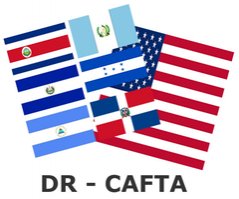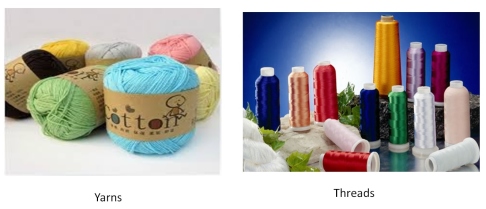In 2011, the US Trade Representative Office announced a number of changes to the Dominican Republic-Central America-United States Free Trade Agreement (CAFTA-DR), or called “CAFTA-DR fixes”. The changes intend to expand export opportunities for the U.S. textile industry under the CAFTA-DR and encourage a vibrant textile and apparel supply chain in the Western Hemisphere. Among the changes of particular significance is the change clarifying that certain monofilament sewing thread is now required to originate or be produced in the United States or the CAFTA-DR region in order for goods to qualify for preferential tariff treatment. [You may think about within the territory of the CAFTA, which country actually has the capacity of making “thread”?] Before the fixes, some CAFTA-DR countries used cheaper threads from Asia which raised grave concerns by the textile manufacturers.
More technical details about the CAFTA-DR fixes can be found here.
PS–The Difference between Yarn and Thread:
- A thread is a type of yarn
- A thread is used for sewing while a yarn can be used for many purposes such as knitting, weaving, embroidering, and crocheting, and so on
- A thread is lighter in weight than a yarn in general
- While a thread is used to sew pieces of fabrics together, yarn is used to weave an altogether new fabric



The U.S. is yarn forward as we have learned in previous classes when discussing TPP. For these changes to occur in CAFTA-DR it allows more trade opportunities for the U.S. and helps create a supply chain with Western Hemispheres. There are some limitations to this new law, but these changes are for the good of the countries involved so everything is fair. Thread now is required to be produced in the U.S. or CAFTA-DR regions in order for these goods to qualify for preferential tariff treatment. If it was not for sewing class and textile science, I fear I may not have learned the true difference between yarn and thread. T o sum up the differences, thread is used to sew things together whereas yarn is used to weave together a new fabric.
It appears that a move is being made to a “thread-forward” distribution chain. The CAFTA-DR region is, at the moment, a yarn-forward region, meaning in order to receive preferential tariff treatment, everything from the yarn to the finished garment must be produced in the United States or other CAFTA-DR country. The new “fix” for a thread-forward supply chain, which has never been used before, is even more specific. Basically every single part of the garment must be produced within a CAFTA-DR country.
This has its ups and downs. The biggest plus side is that the United States is the only country in the CAFTA-DR region that is fully capable of producing these “monofilament sewing threads.” This means that if a manufacturer wants to receive preferential tariff treatment, they must buy their thread from the U.S., which helps to keep the supply chain in the U.S. and assures we are importing quality clothing. On the other hand, clothing will be significantly more expensive. Right now, manufacturers are able to use thread from China, which provides the cheapest materials. If they now must use U.S.-made thread, it will be more expensive, increasing the price of our imports. If the imports are higher, they will sell for a higher price, and we, the consumers, will be paying more.
The textile and apparel industry is far from black and white. With every upside there’s a downfall. You have to lose a little to win a little. The new CAFTA-DR fixes are no exception. They will make some people happy, while they leave others unsatisfied.
the current debate is on the short supply list mechanism
I believe that these changes to the CAFTA-DR are positive for the countries involved. The “CAFTA-DR fixes” encourage trade and production between the United States and those associated in the Western hemisphere. The United States has seen a decline in the textile and apparel industry over the last several years. These adjustments will help improve the production of textiles and result in job supply. This is positive because it is keeping the supply chain in the US and manufacturing more “made in the United States” clothing and products.
Once I looked at the article, I was able to get a more clear understanding of how yarn forward works. CAFTA is a major trade agreement that provides the US and other countries involved with a foundation for freer trade. These amendments made to CAFTA, will be beneficial for the US domestic textile industry. If all monofilament fibers have to be produced in the United States, it will increase our production and sales to countries in CAFTA.
Because we export textiles to countries that produce clothes that we in turn import, it will be mutually beneficial for our domestic textile industry and foreign apparel manufacturing. Some benefits from having tightened regulations on where countries can import from, will be increase in domestic employment and will give us an increased interest in the market. Thus, raising our market share while benefiting from the free trade agreement.
If we are able to access this market by having only US textiles, we will get preferential tariff treatment. With the benefits from the agreement, the costs for apparel will remain constant or even decrease, which is exactly what the consumers want.
good. It is also important to realize that the yarn forward rule work for the US textile industry is because of the industry structure–that’s why in this class we first discuss the status quo of the US T&A industry. Business, economics and politics are closely connected.
This new law is a benefit to the U.S. textile and apparel trading industry. Being yard forward will help the yarn and fiber industries say in business. because this specific rule with CAFTA requires monofilament fibers it will raise our production and export sales to the CAFTA countries. consumers want cheap prices. With this law in place the tariff on clothing with not increase and has the possibility of decreasing. By not affecting the consumers wallet is another benefit to this agreement. Having stricter regulations will help our countries employment grow and the United States will achieve benefits from the Free Trade Agreement.
I believe that the new law could be a benefit to the US textile and apparel trading industry because yarn forward will help yarn and fiber industries say in business. This goes along with one of our homework assignments. Because CAFTA has specific rules and requirements it will help raise our sales in other countries.
With the textile and apparel industry on the decline in the US, I believe that the yarn forward rule can be beneficial for the united states in order to keep business within country up and moving. This rule keeps the production all within these regions and encourages exports from the US. It makes sense because because it encourages long-term relationships between parties involved instead of just short-term investments for just one part of manufacturing.
The changes to CAFTA-DR promote more activity within the supply chain in the Western Hemisphere. The counties involved will have great impact in a positive way to these fixes. However with the changes, countries will no longer be able to use cheaper threads from Asia, which might cause conflict. Many countries under the CAFTA-DR do not have a flourishing economy such as the United States has. I do feel that the new changes are beneficial for all parties involved and will create further expansion on exports.
The new changes made to the CAFTA-DR are very positive and promote more US involvement in the manufacturing process, which is what Americans want. This can create some more jobs in the US textile industry because the changes will promote countries in the CAFTA region to use more of US made yarns and threads. The US is the only country in CAFTA (right now) that has the technology to produce these yarns and threads, and the new regulations will require CAFTA regulated yarns and threads, bringing all business too the US. All though this is great for the US, I have to wonder if it promotes or restricts more globalization. While it will promote more trade in the US with CAFTA regulated countries, it is also causing some more restrictions with countries outside of the CAFTA region that are also competing with the US in the apparel industry and might be winning due to cheaper labor costs. While this is a great start to expanding globalization, I believe that more changes will have to be made to keep progressing with globalization and other countries outside of NAFTA and CAFTA regions.
I think that if CAFTA is going to be ‘yarn-forward’ it should be ‘thread forward’ as well as thread-forward would continue to benefit the U.S. Textile industry which is the goal of CAFTA. If they do not adopt thread forward Caribbean Basin countries involved in manufacturing apparel will import thread from Asia, or wherever it is least expensive to make greater profits.
Like others have already stated, the CAFTA-DR has changed to a yarn forward or thread forward type of agreement (because a thread is a type of yarn they are virtually one in the same). Keeping the agreement yarn forward will not only foster trade between the United States and Dominican Republic and Central America, but it will also “encourage a vibrant textile and apparel supply chain in the Western Hemisphere”. Because of the yarn forward agreement, yarns and threads will need to originate from the United States, Dominican Republic or Central American regions, keeping production and manufacturing of such products local. Due to this change in the agreement, the United States will have a sustainable place in the Textile and Apparel Industry because they are one of the top manufacturers of such products and have an abundance of capital to do so. It will also allow the United States to continue to support American’s jobs and receive increasing revenue from foreign trade, something that was highlighted greatly in our Assignment 4. Not only will the United States have a continued presence but they also have cost effective options of production in both the Dominican Republic and Central American regions so they will not seek these options elsewhere like in Asia.